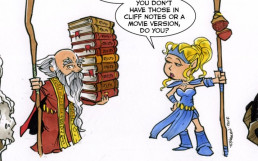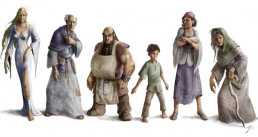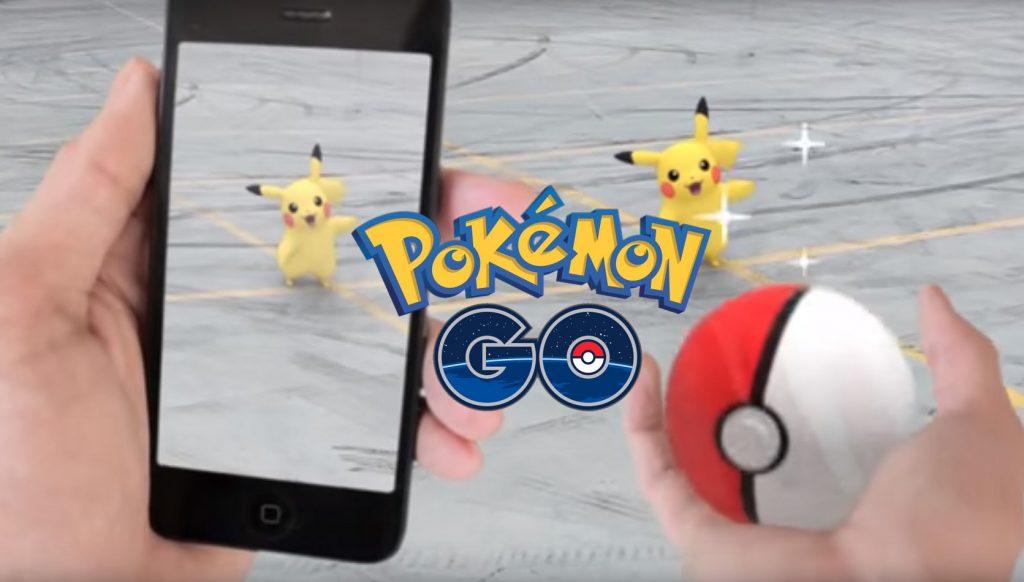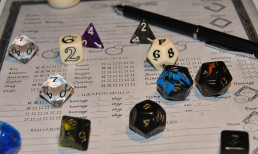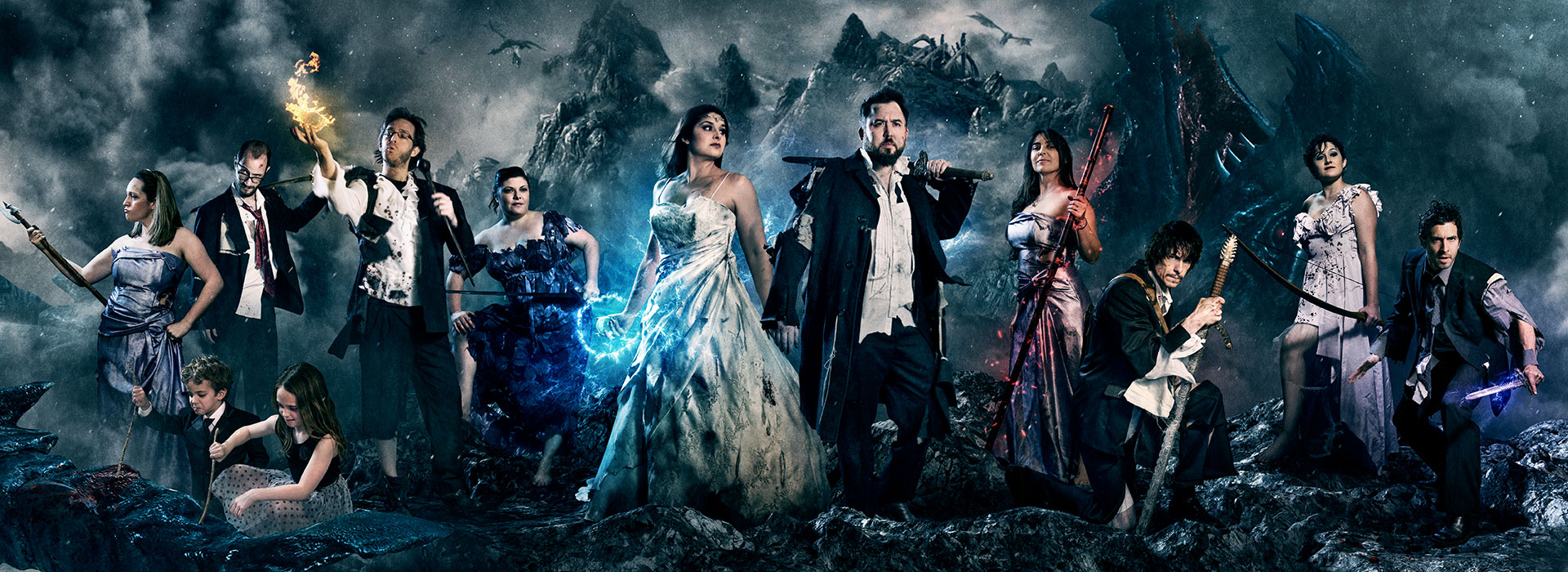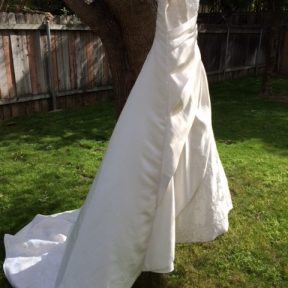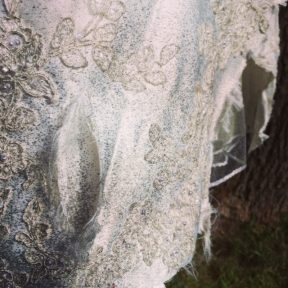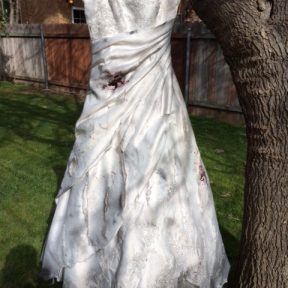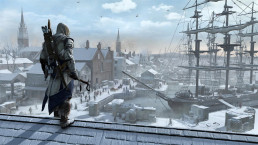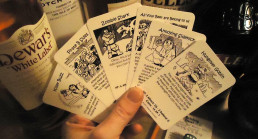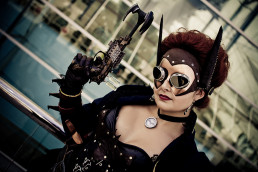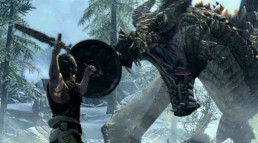Props in Tabletop Games
Utilizing props is one of my GMing trademarks. I think it is a great way to spice things up and keep a story interesting for the players. Whether it’s a one-shot or a campaign you have run for years, props can help the players immerse themselves more fully into the game world and make events more memorable.
However, before you add props to your game, ask yourself why you are doing it. Think about the type of game you are running. Are the players the type that would appreciate a little extra spice? Are they already roleplayers who may just need a little something extra to inspire them? If you have doubts, you might want to bring it up to them first. There are some types of players (*cough* min-maxers *cough*) that won’t appreciate your efforts. If you think your players would benefit from them, consider the setting and tone of your game. What type of props will best serve your needs?
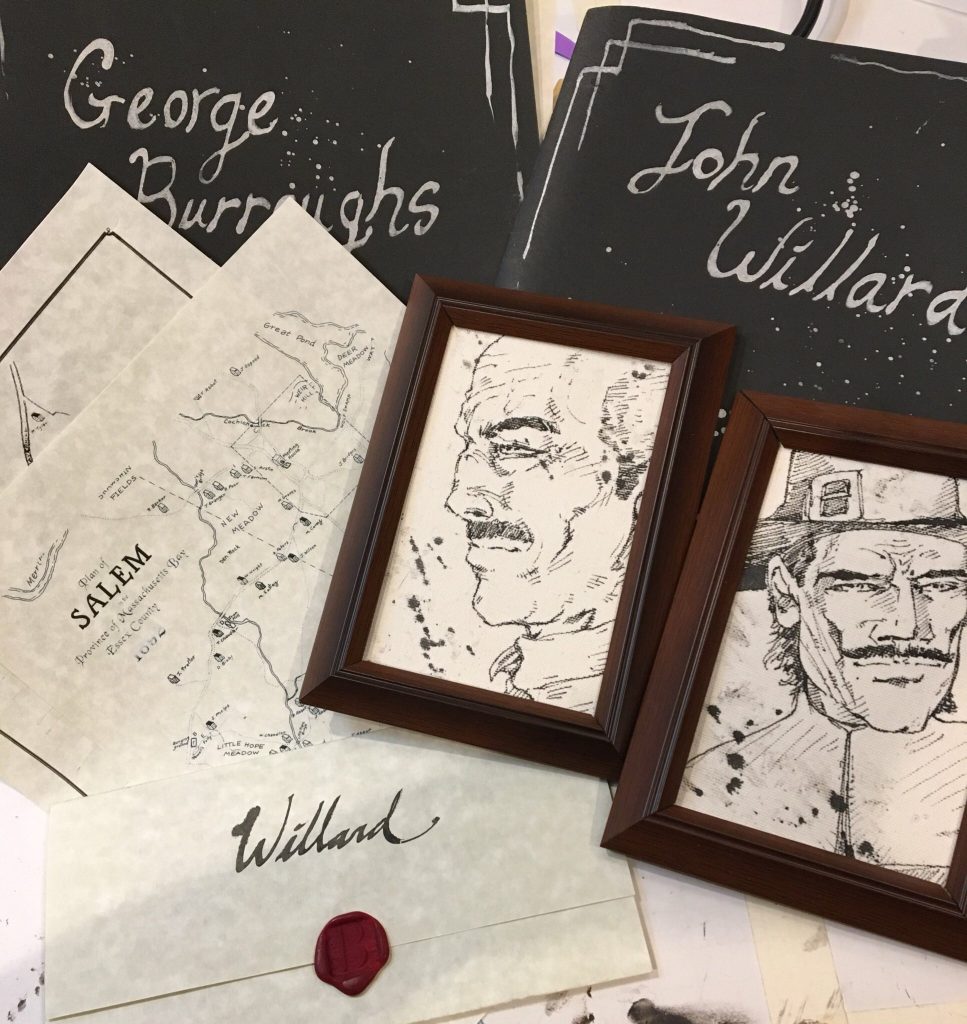 Items from the Story
Items from the Story
Prop items from the story are easily used by the GM to influence the game. The easiest to make are paper items that the characters need, such as maps, letters, paintings and photographs. When I ran a game set in the Salem Witch Trials, I created individual letters for each character that served as their motivation for teaming up to save their town. They also had maps of Salem on parchment paper. Having a contract or wanted poster in their hands immerses the players in the story. These props are really easy to make with the help of a computer and some parchment resume paper. There are a variety of simple methods for aging paper using common household items if you are running a historical or fantasy campaign. Sealing wax or ink stamps are a fantastic touch to finish off important documents.
Other items can also be used to move the story along and give the players information. Books, jewelry, crystals, potion bottles, and so much more! Use your imagination! I made wands and spell books for a Harry Potter game which kept the table lively and in character. It’s much more interesting for the players to study a real book for clues than to roll dice and have you describe what they notice. Once I used jewelry as a way for the party to identify each other as allies. It’s a great visual for them to reference during the game and then is a great souvenir for them after it is over.
Room Decorations
Decorating the table or your gaming room can be a great way to set a specific tone for your game session and it will help players get into character. I suggest starting with the lighting, because that will make the most difference to the vibe in the room. If your players are in a dungeon or if you are playing something like Vampire the Masquerade with a dark tone, turn down your overhead lights. Bring in some other light sources, like table lamps, so that the players can still read their character sheets. Buying colored light bulbs from your local hardware store is another great way to change up the look of a room without moving too much around.
Decorate your table too! We were delighted when one of our players brought candelabras for our Vampire game. They became such a staple of our game that when we couldn’t burn candles anymore, we replaced them with cheap battery powered ones from the Halloween store. Small things like this can give a campaign some unique character and can be fun for the players.
 Food & Drinks
Food & Drinks
Providing themed refreshments makes the players very happy. It fills their bellies while also immersing them in the game world. The plates and cups you use to serve the food are also props. I often find myself holding my beverage of choice like my character would hold it, swishing or sipping a pewter mug or wine glass in character as well. There are many resources online with recipes from Star Wars, Lord of the Rings, Star Trek, A Song of Ice and Fire, and other fictional sources. Historical foods are also a great way to add to a campaign. I highly suggest that you test and taste a recipe before serving it to your gaming group!
Costumes
I love costumes, but I am not always a fan of them around the gaming table. Individual items, such as a hat or elf ears, can be a great addition and help a player stay in character. I suggest talking to your group and starting slow. Really consider how each costume piece will add to the game. Goggles or glasses can add a chance for in-character mannerisms, like nervously adjusting them or cleaning them when they are thinking about something. A longsword may be entertaining the first session, but eventually it will probably end up leaning against the wall and forgotten. Full costumes can get uncomfortable or distracting during a game. Plus, why wear a full costume when you only see each other from the table up? Don’t sacrifice comfort and fun to look the part. There are a number of online costume shops that can help find individual pieces for historical and fantasy games, as well as futuristic and science fiction games. I always suggest checking out your local thrift store or Goodwill before dropping a large amount of money online. I’ve put together whole costumes from second-hand stores. You never know what you will find!
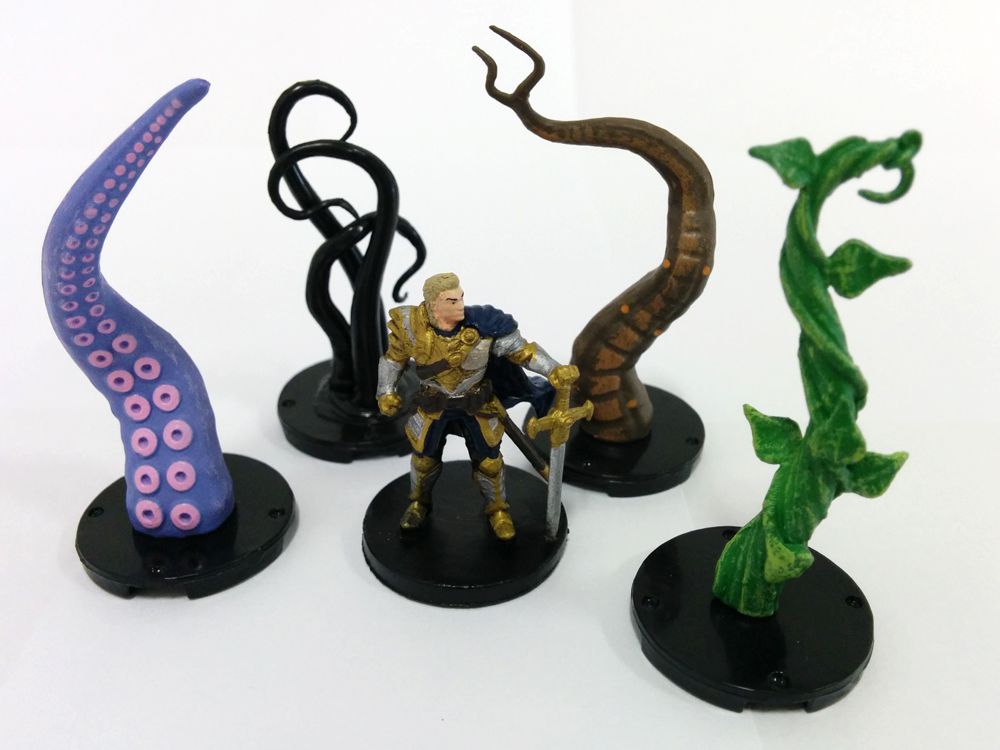 Miniatures
Miniatures
The most common prop in tabletop RPGs are minis. It’s easy to forget that these are props and that they really help with keeping the narrative clear for all the players. The Happy Jacks D&D campaign, Desert of Despair, really made me appreciate how much miniatures help the group visualize what is happening. Having actual spiders or giants to fight, instead of using paper clips or extra dice as stand-ins, can make a big difference. You don’t need to drop a fortune on specific minis for each combat, but using something that is about the right shape is always helpful. If you play D&D or other games that involve miniatures, consider building up a diverse collection of miniature foes for your players to face.
Once you decide that you want to add props to your game, choose carefully! Not all props are created equal! It’s better to add one perfect prop than to drop tons of stuff on the party that will detract from the game rather than add to it. Props will not save a bad game, but if you use them wisely, they can be a fantastic way to add a little dramatic flair to a game.
(This article was first released to Happy Jack's RPG Patreon supporters! Support our show for access to great previews and exclusive content!)
Creating Quality NPCs
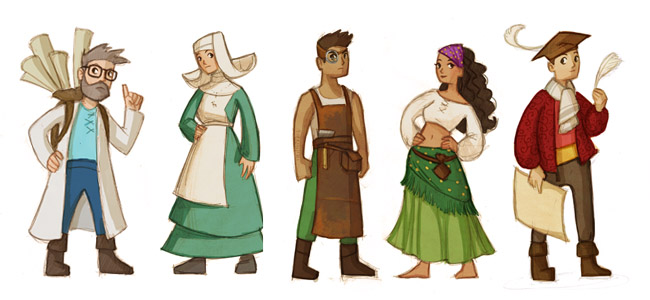 Planning for a game session takes a lot of time. The GM has to anticipate the actions of the players, and do their best to create a story that is challenging and enjoyable. There is a lot of pressure on the GM to create a lot of in-depth content, often with very little turn around time if the group plays multiple times a month. NPCs can be a particular challenge since there are usually a lot of them and players expect them to have personality and depth. So how can a GM create interesting NPCs without spending hours writing their backstories?
Planning for a game session takes a lot of time. The GM has to anticipate the actions of the players, and do their best to create a story that is challenging and enjoyable. There is a lot of pressure on the GM to create a lot of in-depth content, often with very little turn around time if the group plays multiple times a month. NPCs can be a particular challenge since there are usually a lot of them and players expect them to have personality and depth. So how can a GM create interesting NPCs without spending hours writing their backstories?
The fastest way to give an NPC depth is to skin them over a person or character with which you are already familiar. This trick is especially helpful when the party has gone somewhere unexpected and you have to create characters on the fly. It works with personalities that you know from real life, pop culture, literature, or anywhere else! It’s easy to give the fisherman’s wife personality if you model her after your crazy aunt, or to get the mayor to seem planned if you skin him over your favorite Disney villain. Have a list of NPC names ready, and it’s possible to fool the players into thinking that you planned it all ahead of time!
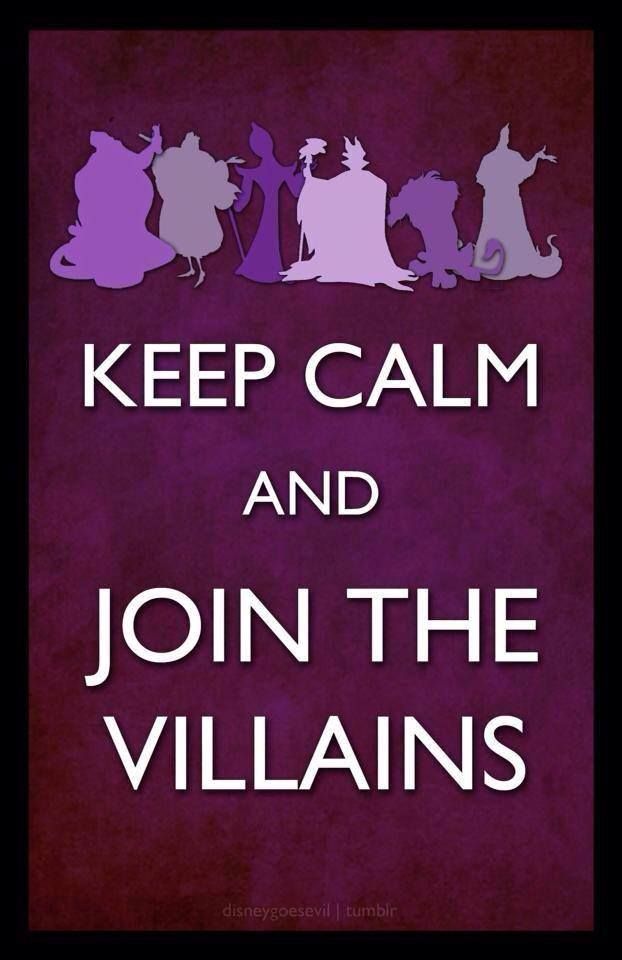 Connecting NPCs to characters you already have in the game is another way to add depth and backstory to them, without starting from scratch. By linking the NPCs to an existing character, a NPC or a PC, you give quick backstory and a frame of reference with which the players can judge them. The young girl they find in the forest ends up being the cousin of the farmer they rescued in the last session, or the town guard served in the military with one of the PCs. This is a great opportunity to bring the PC’s backstories into the game, even if it isn’t a major plot point. These causal connections help make your world feel more real and less episodic. As connections build between NPCs, and between PCs and NPCs, it creates a web that It can also throw some great curve balls at the party when they discover old acquaintances in unexpected places. It’s a great game moment when the party realizes that helping that NPC a few sessions back has unexpected benefits now, or the opposite if you are dealing with a band of murder-hobos!
Connecting NPCs to characters you already have in the game is another way to add depth and backstory to them, without starting from scratch. By linking the NPCs to an existing character, a NPC or a PC, you give quick backstory and a frame of reference with which the players can judge them. The young girl they find in the forest ends up being the cousin of the farmer they rescued in the last session, or the town guard served in the military with one of the PCs. This is a great opportunity to bring the PC’s backstories into the game, even if it isn’t a major plot point. These causal connections help make your world feel more real and less episodic. As connections build between NPCs, and between PCs and NPCs, it creates a web that It can also throw some great curve balls at the party when they discover old acquaintances in unexpected places. It’s a great game moment when the party realizes that helping that NPC a few sessions back has unexpected benefits now, or the opposite if you are dealing with a band of murder-hobos!
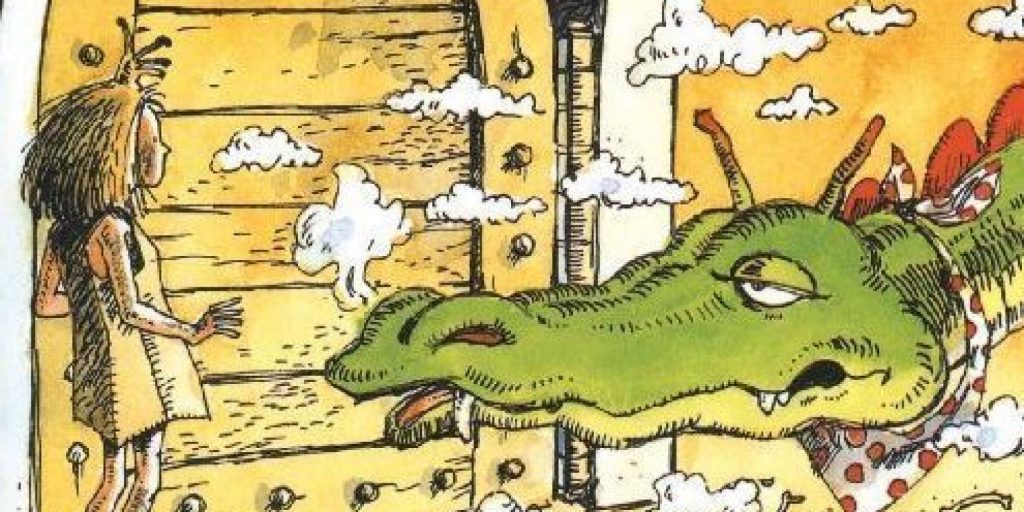 When you do take the time to create deep backstories for characters, it’s always more fun for the players if you avoid classic stereotypes. Not every wizard has to be Gandalf or Merlin. Not every princess has to be a damsel in distress. Make the princess a trained warrior who helps the party instead of waiting to be rescued from the tower. Maybe the wizard was trying to create an immortality spell and is now permanently an obnoxious teenager. NPCs should have disadvantages and flaws, just like any interesting PC. They should also have odd quirks that, although they don’t influence the story, make them unique in the world you have created. Odd collections of items, distinct clothing choices, physical mannerisms, and catchphrases are all great things to build into an NPC. If you are going to spend the time to create an important NPC from scratch, make them worth remembering!
When you do take the time to create deep backstories for characters, it’s always more fun for the players if you avoid classic stereotypes. Not every wizard has to be Gandalf or Merlin. Not every princess has to be a damsel in distress. Make the princess a trained warrior who helps the party instead of waiting to be rescued from the tower. Maybe the wizard was trying to create an immortality spell and is now permanently an obnoxious teenager. NPCs should have disadvantages and flaws, just like any interesting PC. They should also have odd quirks that, although they don’t influence the story, make them unique in the world you have created. Odd collections of items, distinct clothing choices, physical mannerisms, and catchphrases are all great things to build into an NPC. If you are going to spend the time to create an important NPC from scratch, make them worth remembering!
Complex supporting characters enrich the game world and present the group with opportunities for collaborative storytelling. GMs should see them as opportunities as exciting as any combat session. Challenge yourself to keep things fresh and your players guessing with the use of creative NPCs!
(This article was first released to Happy Jack's RPG Patreon supporters! Support our show for access to great previews and exclusive content!)
How to Track a Specific Pokémon
EDIT 8/5/16: It seems that the developers have abandoned all tracking methods and there are currently no plans to add them back into the game. :(
EDIT 7/17/16: This tracking method has been corroborated by multiple sites, however the GPS function on the Pokémon Go app has developed some issues. This method does not currently work, and the paw print distance indicator isn't functioning either. The game is still playable, but there is no known way to track individual Pokémon until the issues are fixed. Hopefully, that is soon.
Pokémon Go has taken the world by storm! People from all walks of life are walking for miles to catch digital creatures, hang at Poké Stops, and meet other players. The game is even more popular than porn! All of us have favorite Pokémon that we want to catch and evolve to the next level, but it can be hard to catch enough of our favorites to make that happen.
Here is the method that I have put together to track down specific Pokémon that are nearby. I developed this method through sources I found online and my own trial and error. Your milage may vary, but it's been very successful for me!
1. First, it's important to be observant and make note of where different Pokémon spawn. They tend to reappear in the same general areas, so you're more likely to catch a specific Pokémon in an area you've seen them before. While water Pokémon tend to spawn near water areas on the map, there is no evidence that electric 'mon spawn near power plants, etc.
2. To track a specific Pokémon, it has to appear on your "Nearby" screen, which means that it is in a few block radius of you. Open that menu by tapping the white bar at the bottom right of your main screen that shows three Pokémon. 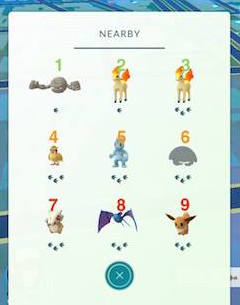 When the menu pops up, it will show a list of up to nine Pokémon. Walk around in an area where you know that your desired Pokémon spawns until it appears in one of the nine slots on your "nearby" tab.
When the menu pops up, it will show a list of up to nine Pokémon. Walk around in an area where you know that your desired Pokémon spawns until it appears in one of the nine slots on your "nearby" tab.
3. The Pokémon in the first spot is the closest to you and the Pokémon in the ninth slot is the farthest away. If you are heading towards your targeted 'mon, it will bump closer to #1 on the list. If you are headed the wrong direction it will bump to a lower number or disappear from the list entirely. Use this as a hot/cold guide to finding your Pokémon. For example, if you are headed north and your 'mon bumps from 5th to 1st, yay! But if then it bumps back down to second, you know you've gone too far north. Retrace your path until it appears as #1 again, then try going east or west. If it stays in #1 great! Keep going! If it bumps down on the list, go back and try the other direction. Finding it takes some trial and error, but once you practice a bit, you can track down a specific 'mon from blocks away in a very short time period.
4. Once a Pokémon is in the 1st spot, you can use the paw prints to close in on it by continuing the hot/cold method, with paw prints increasing or decreasing as you get closer or farther away. For a more exact approach you can use this method being passed around on Reddit.
5. Throw a Poké Ball to capture your desired Pokémon! Woot!
NOTE: If you walk for a while and notice that your "Nearby" list hasn't changed at all, try closing the app and restarting it. Like with so many other aspects of this game it can freeze and crash sometimes.
(EDIT: THE FOLLOWING PARAGRAPH HAS BEEN PROVEN FALSE!! THE GREEN PULSE INDICATES A CHANGE IN ORDER OF THE POKEMON THE "NEARBY" SCREEN LIST! IT DOES NOT SHOW DIRECTION OF POKEMON! I am leaving this section up so people know the rumor and that it is NOT TRUE!) A rumor is floating around about another tip!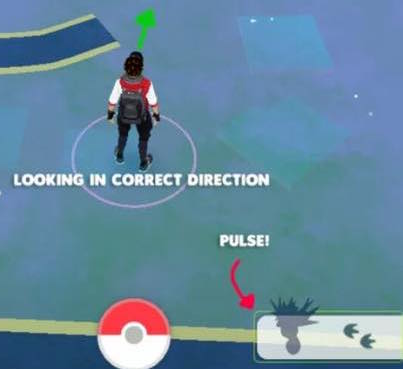 Supposedly, when you select a specific Pokémon on the "nearby" list (you select it by tapping the 'mon and a circle appears around it) it will appear by itself in the white bar at the bottom of the main screen. Make sure your compass is on and slowly face different directions. When you see a green pulse from the bar where the Pokémon is, that means you are facing the direction you need to go to catch that Pokémon. I've had some success with this, but my avatar tends to flip out and face different directions when I try it, so it's impossible to tell which direction is correct. It doesn't seem reliable enough to trust completely on its own, if it is really true at all.
Supposedly, when you select a specific Pokémon on the "nearby" list (you select it by tapping the 'mon and a circle appears around it) it will appear by itself in the white bar at the bottom of the main screen. Make sure your compass is on and slowly face different directions. When you see a green pulse from the bar where the Pokémon is, that means you are facing the direction you need to go to catch that Pokémon. I've had some success with this, but my avatar tends to flip out and face different directions when I try it, so it's impossible to tell which direction is correct. It doesn't seem reliable enough to trust completely on its own, if it is really true at all.
Other helpful hints:
- Stop walking when you notice the white Poké Ball loading image spinning at the top of the screen. This means that the Pokémon in your vicinity are still loading in the app, so if you keep walking you could miss out on a spawn or your tracking with the "nearby" screen could be thrown off.
- More than one person can catch a Pokémon when is spawns, so enjoy the game with friends! The 'mon will spawn at different CP levels depending on the player's level.
 - Lots of areas are developing popular lure hangouts, especially in places where multiple Poké Stops are close to each other. Make use of these areas to maximize Poké-catching opportunities and to chat with other fans! Be careful and stay safe though, especially if you are Poké-hunting in the evenings.
- Lots of areas are developing popular lure hangouts, especially in places where multiple Poké Stops are close to each other. Make use of these areas to maximize Poké-catching opportunities and to chat with other fans! Be careful and stay safe though, especially if you are Poké-hunting in the evenings.
- Turn down the brightness on your screen and turn off the game music and your battery will last a lot longer, especially if you are an iPhone user!
Now, go catch 'em all! :)
Tabletop RPGs: Tips for New Players
"I'd love to play D&D but I don't know how and don't want to mess up the game."
I've heard this statement from many people over the years, many of whom became avid gamers with a little assistance. Playing tabletop RPGs is a lot of fun, but it can also be intimidating for new players. Unlike most board games with a set goal and predicable player experience, RPGs change with every choice that the characters make during the game session.
Not having a "right way" or rails to fall back on can make inexperience players feel unsure and self conscious, but don't let that keep you from joining a game!
Nobody learns to play a tabletop RPG without sitting at a table and actually playing.
You can memorize everything about the game, but becoming a good RPG player takes practice. You will learn as you go, and even after playing for decades you will keep learning from new experiences. Just like the characters we play, we get XP as we go!
It always helps to have some guidance though, and so, I'd like to impart some knowledge that will be helpful to new players.
Who is in charge?
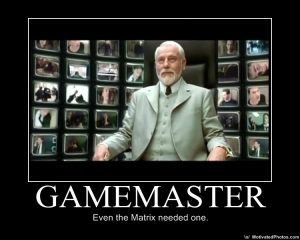 The Game Master (GM), or Dungeon Master (DM) if you are playing D&D, is in charge of running the game. It is their job to make sure that the game is engaging, follows the system's rules, and that everyone is having fun. They are, in many ways, the "god" of your game world. They create the setting, non- player characters, monsters, situations and everything else that you and your fellow players will face in the game.
The Game Master (GM), or Dungeon Master (DM) if you are playing D&D, is in charge of running the game. It is their job to make sure that the game is engaging, follows the system's rules, and that everyone is having fun. They are, in many ways, the "god" of your game world. They create the setting, non- player characters, monsters, situations and everything else that you and your fellow players will face in the game.
It is important to note that the GM does NOT get to make your choices for you.
They can create the dungeon with a dragon inside, but they cannot make your character walk in and slay it. That has to be your choice. If you want your character to head to the local tavern instead, you have that right! (But I can't guarantee the GM won't turn around and make the dragon attack the tavern!)
It's a good idea to befriend your GM. They are the best resource for everything related to your campaign and can help you with any questions you have along the way. Work closely with them as you learn the system and show your appreciation for all the hard work they put in to keeping the game going. You show up and play once a week, but they spend hours prepping before every session. Without the GM, there is no game.
How do I build my character?
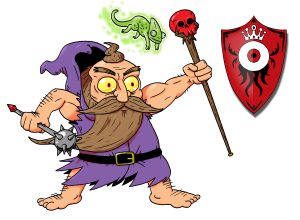 I could write a whole post about creating a character (and I probably will in the future!) but for now, I will try to keep it short and sweet.
I could write a whole post about creating a character (and I probably will in the future!) but for now, I will try to keep it short and sweet.
Talk to your GM before you start making your character and ask for their advice. Different games have different flavors and you don't want your character to bring a gun to a magic fight, or be an evil character in a group of holy paladins. Or maybe you do want that, but you should get permission from your GM before adding that type of complexity to the game.
All systems have a set of mechanics to help you build a character's abilities, so make sure that you read that section of the players handbook thoroughly. If you have questions about the process, your GM and fellow players are your best resource to help you make your character. There are also many online forums where you can ask any questions that you might have during character creation.
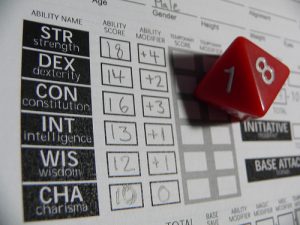 Make sure that your character's stats (strength, intelligence, etc) support the skills and abilities that you select for them. For example, most fighters will need a lot of physical stat points, such as strength and constitution, while magic users or investigation types will need more intellectual stats. It's not helpful to have a fighter who isn't strong enough to wear their armor! Chose your stats and abilities wisely, because they change slowly once the campaign starts!
Make sure that your character's stats (strength, intelligence, etc) support the skills and abilities that you select for them. For example, most fighters will need a lot of physical stat points, such as strength and constitution, while magic users or investigation types will need more intellectual stats. It's not helpful to have a fighter who isn't strong enough to wear their armor! Chose your stats and abilities wisely, because they change slowly once the campaign starts!
Next, develop your character's personality. Hopefully, you had something in mind while you were working on his/her stats and skills. Some game systems have personality stuff built in to character creation which give you a basic framework for a personality and back story. If so, great! Just use that as a basic structure and add in some smaller details. If not, you have a bit more to do to create your character.
What can my character do?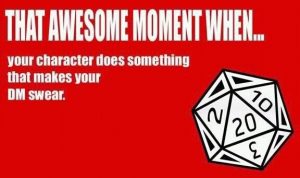
Your character can TRY anything that you'd like, but they won't always succeed. Take chances and think out of the box. Every problem should have multiple solutions. Success is determined by your dice rolls and the GM's choices. Choose wisely! Saying, "I shove a sword up his butt!" may not be as funny as you expect when it actually happens in the game.
Be an active participant!
Tabletop RPG game sessions can last a long time, usually several hours for a single session. The time can sometimes pass slowly, especially during combat, it's important to take an ACTIVE interest in everything that is happening during the game. That means listening and participating in character, maybe even taking notes so that you can remember important details later.
Combat can take time, but it's important that you are paying attention to what other players are doing on their turns!
There is nothing worse than being in the midst of a difficult combat and having a player do something useless because they have no idea what the last player did on their turn. Be aware of what players are doing so that you can make good tactical choices and contribute to the battle!
What is metagaming? Why is it bad?
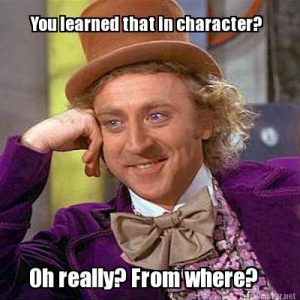 Metagaming is making decisions based upon out of game knowledge. For example, you saw your GM's notes and know that there is a dragon in the dungeon. If you have your character avoid the dungeon, you are metagaming. Your character doesn't know there is a dragon waiting to eat you. You are using PLAYER knowledge to make a choice in game, not CHARACTER knowledge. For obvious reasons, metagaming can really mess up a game. DON'T DO IT!
Metagaming is making decisions based upon out of game knowledge. For example, you saw your GM's notes and know that there is a dragon in the dungeon. If you have your character avoid the dungeon, you are metagaming. Your character doesn't know there is a dragon waiting to eat you. You are using PLAYER knowledge to make a choice in game, not CHARACTER knowledge. For obvious reasons, metagaming can really mess up a game. DON'T DO IT!
Ask Questions!
Nobody expects you to know everything! Asking questions, in character or out of character, is a natural part of the game. Everyone does it, no matter how long they have been playing. Why do you think gamers carry around the game rule books all the time?
What Can We Learn from #GamerGate?
 Since August, the internet has been in an uproar about the #gamergate controversy. It seems that everyone has a different opinion about the point of the movement and its impact on the industry. Regardless of what the parties involved intend, and the horrible behavior of jerks abusing the anonymity provided by the internet, there are two main issues that should be pulled from this clusterfuck and more closely examined.
Since August, the internet has been in an uproar about the #gamergate controversy. It seems that everyone has a different opinion about the point of the movement and its impact on the industry. Regardless of what the parties involved intend, and the horrible behavior of jerks abusing the anonymity provided by the internet, there are two main issues that should be pulled from this clusterfuck and more closely examined.
1. Ethics in Journalism
Regardless of your feelings about the #gamergate movement, this is an important issue that shouldn't be ignored. When I was a teacher, I always warned my students about the information available on the internet. The internet gives us incredible freedom to express ourselves and share our opinions, however there are no controls in place to vet websites, online authors, or their works. Anyone with an internet connection can start a website or blog and post whatever they like.
This isn't always a bad thing. Many online authors, including myself and many of my friends, are passionate fans who simply want to share what they love with other fans. These grassroots writers are often considered more credible since they are "of the people" but sometimes that can make it harder for them to stay objective. When you are a fan of something, it's tempting to feel like you are legitimately connected to it or dream of getting paid for writing about it. Companies are getting savvy about giving review copies, merchandise, special access to events, and even job opportunities to reviewers/fans who can have a positive impact on their sales. One recent example is the Shadow of Mordor marketing company, Plaid Social Labs, 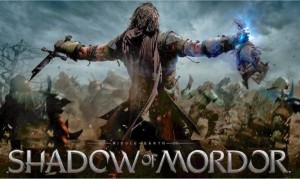 who only provided advanced copies of the game to approved reviewers who signed a lengthy agreement that stipulated a positive review, specific social media promotion requirements, and gave the company final approval over any videos reviewing the game.
who only provided advanced copies of the game to approved reviewers who signed a lengthy agreement that stipulated a positive review, specific social media promotion requirements, and gave the company final approval over any videos reviewing the game.
While conflicts of interest and quid pro quos are not a new problem in journalism, it is new to have so many well-known online commentators who lack the ethical training that comes with a degree in journalism. We need to start demanding transparency from online sites and their contributors, especially in a world where more and more purchases are based on the information we gather online.
2. Misogyny in Gaming
There is no denying that #gamergate has been inextricably linked with horrific threats against a number of women in the gaming industry. Regardless of whether the people involved in these attacks are really part of the #gamergate movement or assholes just using it as an excuse to behave like monsters, this issue should be taken seriously by everyone in the gaming community. Nobody should be subject to threats such as these simply for being an outspoken woman in the gaming industry.
 The very essence of these threats is to dominate the women involved and to scare them so that they don't speak out about the often unfair conditions in the gaming world. Graphic descriptions of rape seem to be a special flavor of threat that asshats save for women. Thanks for that.
The very essence of these threats is to dominate the women involved and to scare them so that they don't speak out about the often unfair conditions in the gaming world. Graphic descriptions of rape seem to be a special flavor of threat that asshats save for women. Thanks for that.
This problem predates #gamergate, as seen with Anita Sarkeesian and her Tropes vs. Women in Video Games series, which first started getting online attention with her incredibly successful Kickstarter project in 2012. Even if you don't agree with all the arguments she presents in her videos, the horrific responses from enraged video game fans over the past few years has been shocking. She has repeatedly been driven from her home and threatened with graphic rape and death scenarios, simply for stating her opinion of how women are treated in video games on her own YouTube channel. 
As a woman, I have faced misogyny in gaming, usually at conventions where I am interacting with strangers. It's disheartening and makes me feel like I don't belong, even when I'm the one wearing the GM Volunteer badge. I can't imagine the courage it takes to face violent threats from strangers who know where you live. We need to stand together and loudly voice that we will not tolerate this type of treatment towards ANYONE in our community. Trolls and predators should not be ignored, but should be vehemently told that they do NOT speak for us.
If the gaming community can take a step back from the drama and conjecture of the #gamergate controversy, we could learn from recent events and become better for this whole awful experience.
Skyrim Wedding Picture
What happens when a costumer and a photographer/VFX artist fall in love? EPIC PICTURES! This visual celebration of our nuptials and our obsession with Skyrim, has been a long time in the making and we debuted it on February 17th in honor of our first wedding anniversary.
Each member of our wedding party, including our ring bearer and flower girl, were photographed individually in front of a green screen. The clothes were all bought at local thrift stores and we had a blast ripping them up, then covering them in movie dirt and blood. Actually, I was a little too vigorous while ripping up my stunt bridal gown with scissors, so there is actually a good amount of real blood on mine. #legit
While this started as a fun project to celebrate our fandom, it's quickly become very popular! Our picture was even featured on Kotaku.com! We really love that other fans have enjoyed our work and really appreciate all the well wishes!
Now, to plan for next year...
Achievement Unlocked: Learning from Video Games
This week, a fellow teacher asked me to help her grade the California Mission projects that are a staple of 4th grade. She explained that the students were allowed to make models of their assigned mission out of whatever materials they liked, most chose Legos, cardboard, or food items, but there were a few that she needed a "computer person" to grade. She plopped in a flashdrive and I was completely surprised and delighted!
The students had created their missions in Minecraft.
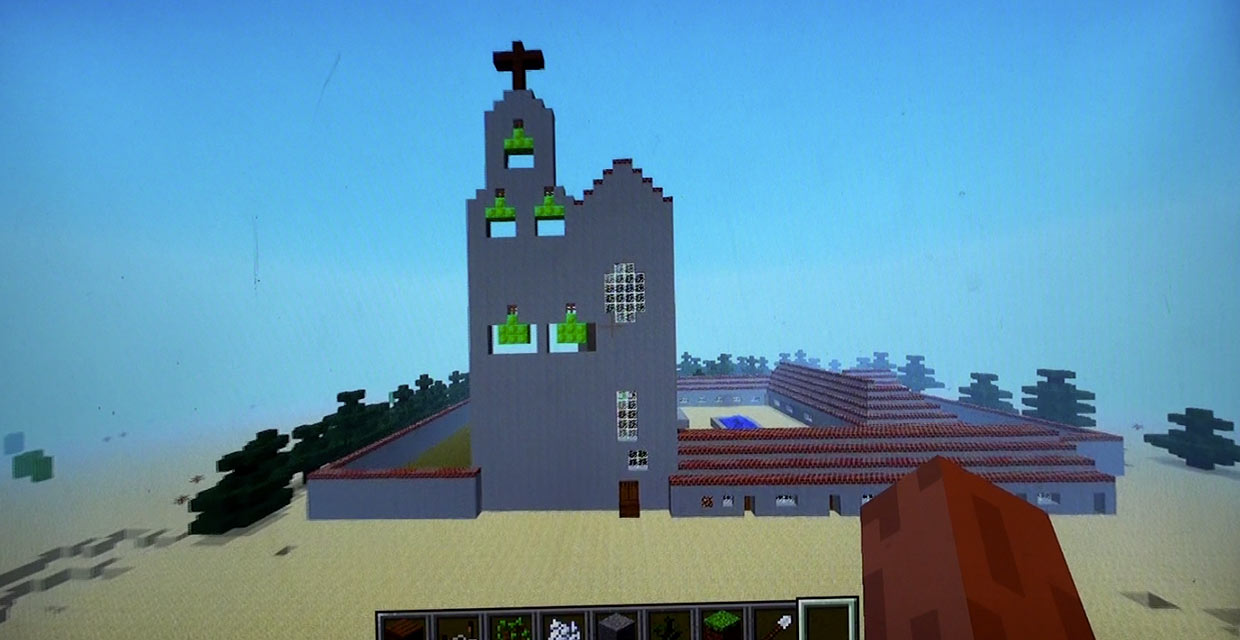 Now, I have spent countless hours in Minecraft, so I really appreciated the effort that went into these digital mission models. One student in particular had even made his mission to scale (I think each Minecraft block equaled 3 feet), filled the place with plants and livestock, made fountains, and even did his best to recreate the Jesus statue that is on display. They had then taken screen shots, or recorded themselves giving a tour of the mission to turn in for credit. The thing that really struck me was the passion that was evident in the students' voices as they explained their missions. They were so proud of what they had made, and could explain every detail of their mission. It was evident that their passion for Minecraft had helped them connect with the history lesson on a whole new level. I assured the teacher that these were very impressive projects, and the students did indeed put the same (or more!) effort into their projects as the other students. I joked that she should give extra credit if they did it in survival mode, but she just looked confused. Go fig.
Now, I have spent countless hours in Minecraft, so I really appreciated the effort that went into these digital mission models. One student in particular had even made his mission to scale (I think each Minecraft block equaled 3 feet), filled the place with plants and livestock, made fountains, and even did his best to recreate the Jesus statue that is on display. They had then taken screen shots, or recorded themselves giving a tour of the mission to turn in for credit. The thing that really struck me was the passion that was evident in the students' voices as they explained their missions. They were so proud of what they had made, and could explain every detail of their mission. It was evident that their passion for Minecraft had helped them connect with the history lesson on a whole new level. I assured the teacher that these were very impressive projects, and the students did indeed put the same (or more!) effort into their projects as the other students. I joked that she should give extra credit if they did it in survival mode, but she just looked confused. Go fig.
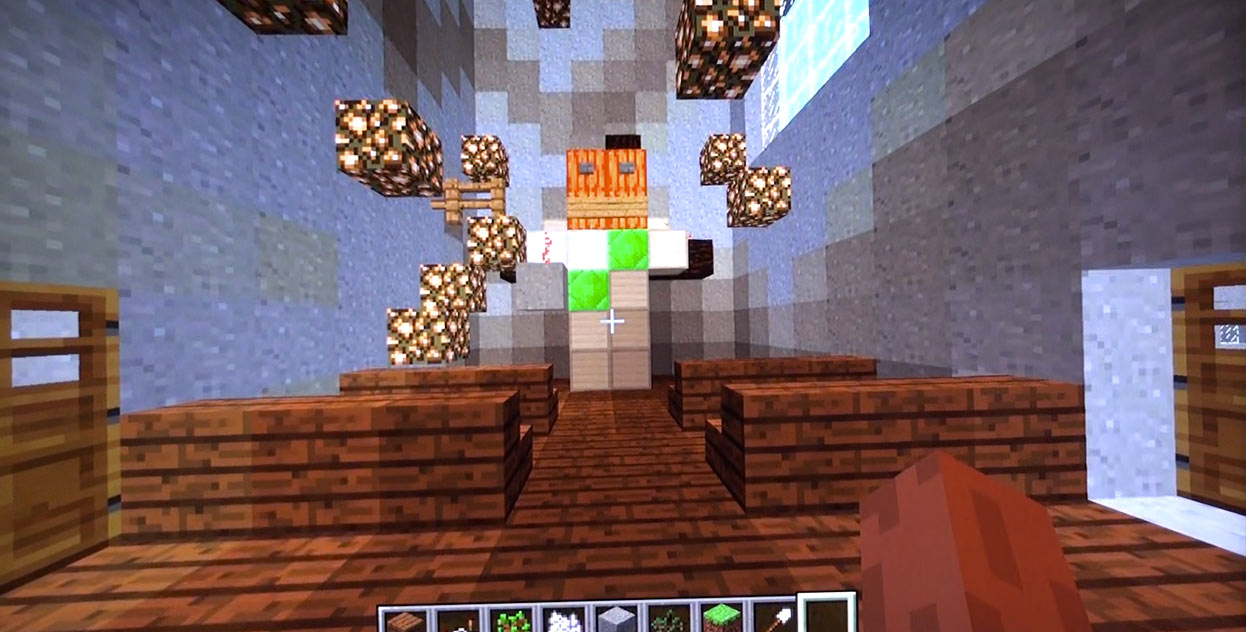
Kids are becoming more and more plugged into technology. Studies show that the younger generations are actually changing the way they process information and are more able to multitask than any previous generation. Many teachers grow frustrated by this because they feel that it shortens attention spans, and makes the "real world" seem less interesting or too difficult when constant entertainment and easy answers are a few clicks away. The trouble is, technology isn't going anywhere. Now we carry complete game consoles and movie collections in our pockets. Education has to adapt.
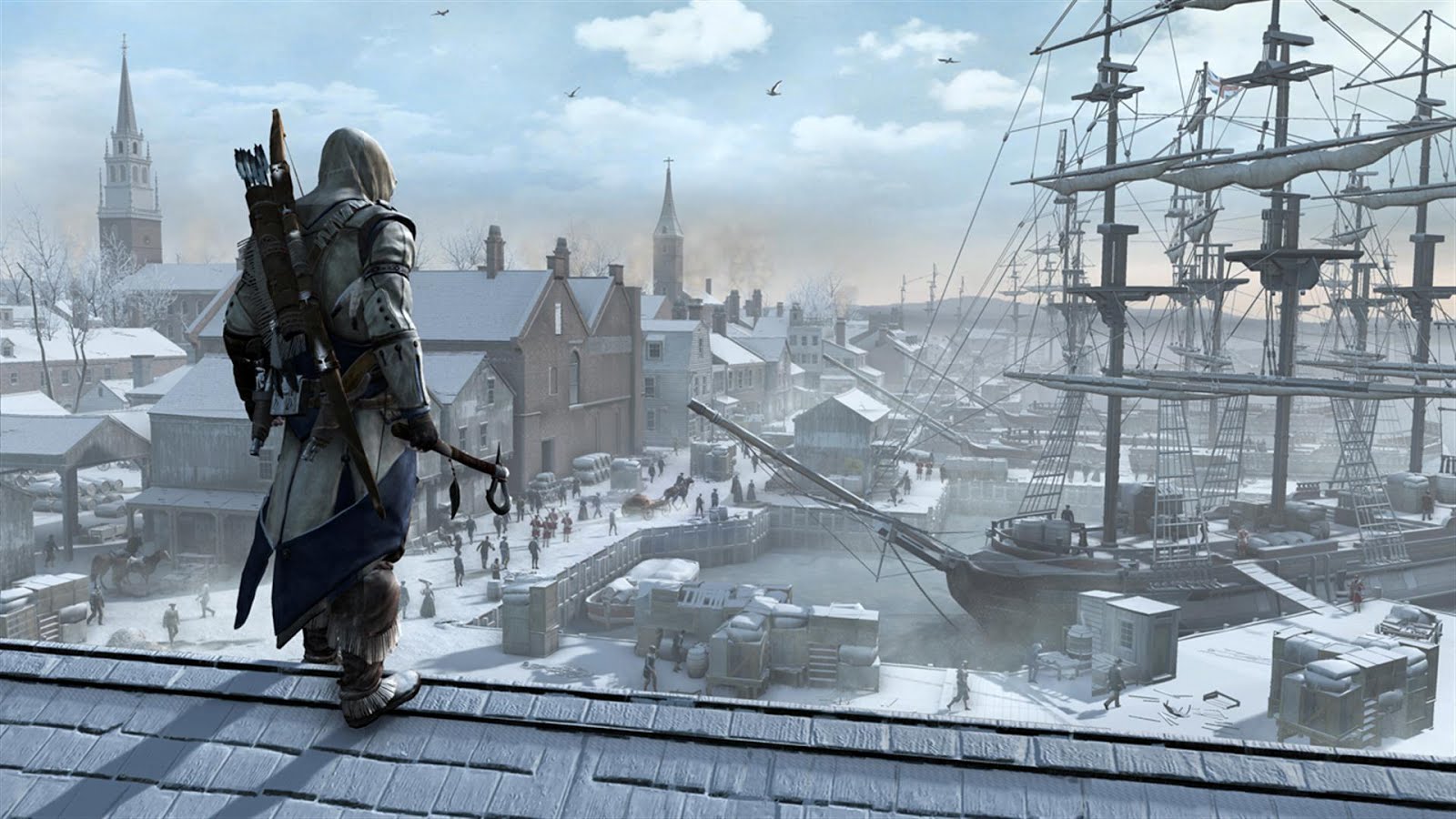 People CAN learn from video games. What evidence do I have for this? The countless world maps, boss fights, spell combos, crafting requirements, and more that I have memorized for video games over the years. If I were put into a real life Azeroth, I'd be set. Why can't we apply this concept to education? The Assassin's Creed games are very historically accurate. The clothing, city maps, and cultures are very well done, and I was delighted by the level of detail in Assassin's Creed III. Their recreation of Colonial fashion and culture was amazing, and they even had period music being performed by the NPCs. I'd love to have a G-Rated version of the game for US history students to explore. Giving them a half hour to explore a digital version of Boston during the Revolution is much more memorable and engaging than any description, reading, or video I could show them about that time period. Helping Benjamin Franklin find the pages to his almanac while watching British troops patrol the streets, stray dogs barking at horses, and ships floating in the harbor is the closest thing we have to time travel. Why talk to students about the Boston Tea Party when we can provide a way for them to participate in it?
People CAN learn from video games. What evidence do I have for this? The countless world maps, boss fights, spell combos, crafting requirements, and more that I have memorized for video games over the years. If I were put into a real life Azeroth, I'd be set. Why can't we apply this concept to education? The Assassin's Creed games are very historically accurate. The clothing, city maps, and cultures are very well done, and I was delighted by the level of detail in Assassin's Creed III. Their recreation of Colonial fashion and culture was amazing, and they even had period music being performed by the NPCs. I'd love to have a G-Rated version of the game for US history students to explore. Giving them a half hour to explore a digital version of Boston during the Revolution is much more memorable and engaging than any description, reading, or video I could show them about that time period. Helping Benjamin Franklin find the pages to his almanac while watching British troops patrol the streets, stray dogs barking at horses, and ships floating in the harbor is the closest thing we have to time travel. Why talk to students about the Boston Tea Party when we can provide a way for them to participate in it?
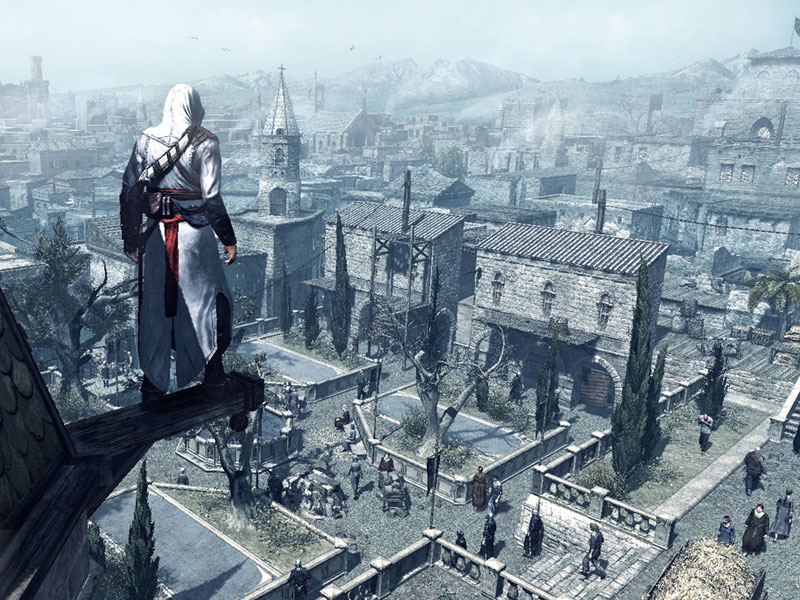 Online multiplication drills aren't using the full potential of games in education. We need to encourage companies to create good educational games, or to alter mainstream games to be useful in the classroom. Communities must accept that games are a viable way to learn and allow educators to spend money on them and the technology needed to use them. In the meantime, educators must use the games already at our disposal to enhance our students' experiences in the classroom. We need to find a way to channel the younger generation's love affair with technology into an educational resource.
Online multiplication drills aren't using the full potential of games in education. We need to encourage companies to create good educational games, or to alter mainstream games to be useful in the classroom. Communities must accept that games are a viable way to learn and allow educators to spend money on them and the technology needed to use them. In the meantime, educators must use the games already at our disposal to enhance our students' experiences in the classroom. We need to find a way to channel the younger generation's love affair with technology into an educational resource.
Review: Drinking Quest RPG
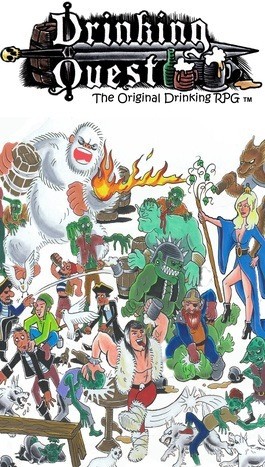 I take my gaming and my drinking very seriously. You have to when you're on a podcast with the tagline, "Pursuing the RPG Hobby with Reckless Abandon... and beer." Perhaps because of this, I was recently sent a review copy of Drinking Quest, an RPG card game designed to be played while drinking. In fact, the mechanics require you to be drinking.
I take my gaming and my drinking very seriously. You have to when you're on a podcast with the tagline, "Pursuing the RPG Hobby with Reckless Abandon... and beer." Perhaps because of this, I was recently sent a review copy of Drinking Quest, an RPG card game designed to be played while drinking. In fact, the mechanics require you to be drinking.
BEST CONCEPT EVER.
Drinking Quest is a very simple RPG by design, after all, they are expecting you to play while inebriated. The game is designed for two to four players. Everyone starts by choosing one of the four pre-generated character cards. These are all about equal power-wise, and have funny names and powers. I was a little disappointed that only one of the four characters is a very female character, but all the characters are very stereotypical to the point of being crude satire. The characters are really basic, with no armor, low stat numbers, and simple attacks. Again, I assume the designers were trying to keep the math simple for Drinky McDrinkerson and his buddies. After you kill off some enemies you can collect gold to buy some simple items to improve your defense or attacks.
There is no DM/GM, and each player draws a card to see what opponents or challenges they will 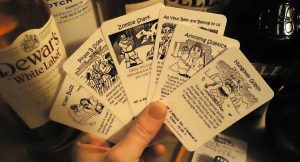 face. They player rolls against another player who represents the baddy if an opponent is drawn, or the player rolls all three dice if it's a stat challenge. Combats are simple and usually over in a few hits. It really reminds me of a simplified version of the DnD boardgames, like the Legend of Drizzt. It's a great little system that doesn't put responsibility on any one player. Everyone is able to just relax and enjoy themselves.
face. They player rolls against another player who represents the baddy if an opponent is drawn, or the player rolls all three dice if it's a stat challenge. Combats are simple and usually over in a few hits. It really reminds me of a simplified version of the DnD boardgames, like the Legend of Drizzt. It's a great little system that doesn't put responsibility on any one player. Everyone is able to just relax and enjoy themselves.
One thing that is lacking in Drinking Quest is a healing system. The game is designed to have your character die, then you chug your drink to get them alive and back to full health the next  turn. It sounds like it would be really fun, however it seems that characters almost never die in Drinking Quest. We played a few times and only a handful of chugging instances occurred. This seemed to be the main drinking component in the game, so we were a little disappointed that it happened so rarely.This isn't exactly a bad thing, especially if your just looking for something to play when your GM calls in sick, but if you're looking to get wasted this may not be your game. Try Beer Pong. My group ended up house ruling a healing mechanic that involved taking a big swig and getting a hit point back. (We just weren't getting drunk fast enough apparently!) This may only be a good idea if you are drinking beer, because a home brewed healing game with shots might kill someone.
turn. It sounds like it would be really fun, however it seems that characters almost never die in Drinking Quest. We played a few times and only a handful of chugging instances occurred. This seemed to be the main drinking component in the game, so we were a little disappointed that it happened so rarely.This isn't exactly a bad thing, especially if your just looking for something to play when your GM calls in sick, but if you're looking to get wasted this may not be your game. Try Beer Pong. My group ended up house ruling a healing mechanic that involved taking a big swig and getting a hit point back. (We just weren't getting drunk fast enough apparently!) This may only be a good idea if you are drinking beer, because a home brewed healing game with shots might kill someone.
The cards are clever and entertaining. They are some real zingers in there that will crack up the whole group. The challenges are amusing and it's nice that everything is drawn 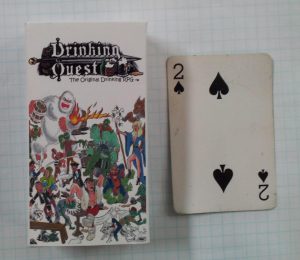 randomly so that every time you play the adventure changes. I was very worried about the "sexual prowess" stat when I first looked at the character cards, but it's used in an amusing and not a gross way (phew!). The artwork, by Carole Nelan, is well done and perfect for the feel of the game. It requires three dice, the game cards, and character sheets. The game is very high quality, with professional level cards, disposable character sheets on a pad, and a color printed box. The package design is excellent, and all of these items fit into a slightly larger playing card box. Seriously, I have both Drinking Quest and Drinking Quest 2 in my purse right now. I really appreciate that type of compact design in my games and gaming books.
randomly so that every time you play the adventure changes. I was very worried about the "sexual prowess" stat when I first looked at the character cards, but it's used in an amusing and not a gross way (phew!). The artwork, by Carole Nelan, is well done and perfect for the feel of the game. It requires three dice, the game cards, and character sheets. The game is very high quality, with professional level cards, disposable character sheets on a pad, and a color printed box. The package design is excellent, and all of these items fit into a slightly larger playing card box. Seriously, I have both Drinking Quest and Drinking Quest 2 in my purse right now. I really appreciate that type of compact design in my games and gaming books.
For $22 a pack the price is a little steep in my opinion. We had a good time with the game, and if you think you'd have the opportunity to play a lot, it could be worth the money to some gamers. If you will be playing with the same group over and over again, I'd suggest buying Drinking Quest 2 in addition to the original. It is a stand alone game, not an expansion, but you could mix up the adventures and PCs with the original Drinking Quest deck in order to keep things fresh. And, as always, I am fully behind home brewing the rules to customize the fun for your group.
You can learn more about drinking quest and buy it at drinkingquest.com. Please, drink responsibly... or crash on someone's couch.
Kimi's Cosplay Interview for Examiner.com
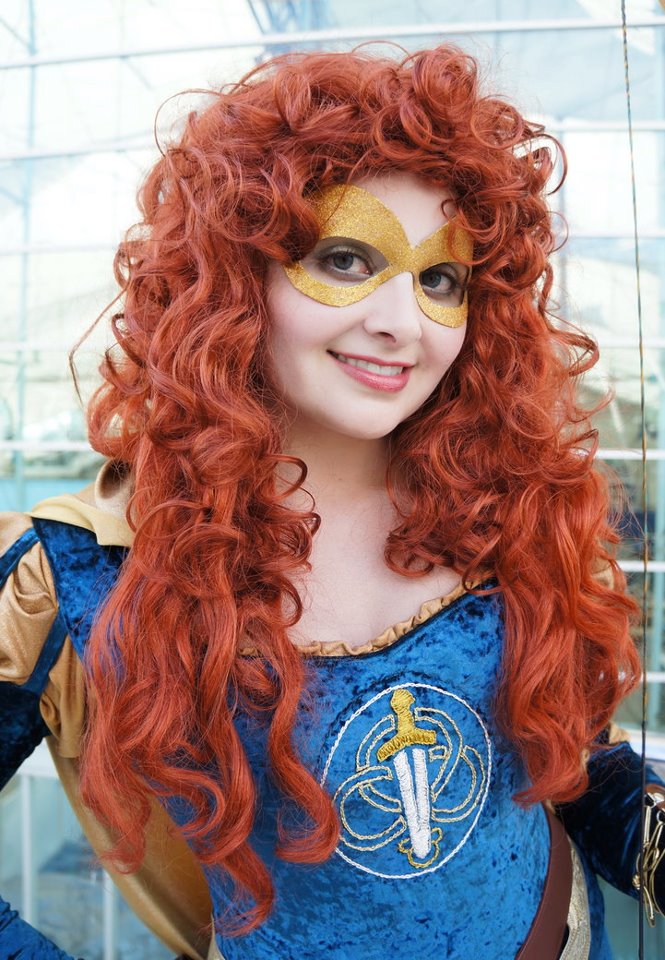 I was interviewed by Examiner.com about cosplay, gaming, and how the two are linked. Read up to get the inside scoop on my upcoming cosplays, my dream cosplay, cosplay advice, my favorite alcoholic beverages, and more!
I was interviewed by Examiner.com about cosplay, gaming, and how the two are linked. Read up to get the inside scoop on my upcoming cosplays, my dream cosplay, cosplay advice, my favorite alcoholic beverages, and more!
Special thanks to Claire Broderick, the gaming writer for Examiner.com who came up with such great questions!
Kimi's Cosplay Interview on Examiner.com
Herding Dragons: My Wild Talents Con Game
 I love adding a unique twist to my convention games, and my Wild Talents game for Gateway 2012 was no exception. Months earlier I had been inspired to set my game in the world of Skyrim (mostly because I was playing it every waking moment), but I wanted to give my players a completely unique experience. A major role reversal was in order.
I love adding a unique twist to my convention games, and my Wild Talents game for Gateway 2012 was no exception. Months earlier I had been inspired to set my game in the world of Skyrim (mostly because I was playing it every waking moment), but I wanted to give my players a completely unique experience. A major role reversal was in order.
When my players arrived, they were greeted by my trademark gaming table. I've had other GMs scoff at my admittedly overdone layouts, but I 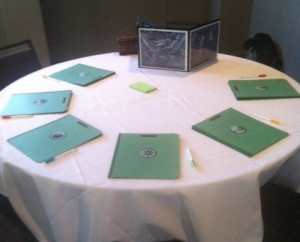 find that players really appreciate the amount of preparation and it starts everything on a very positive note. Folders were laid out on the table, each one labeled with a symbol that represented the character that lay within. I never let players see the character sheets before a game, so these symbols were the only clue they had to choose their folder. I find that this forces players out of their usual go-to roles and really ends up stretching their creativity during the game. It also negates the show-up-early-to-get-the-best-character strategy.
find that players really appreciate the amount of preparation and it starts everything on a very positive note. Folders were laid out on the table, each one labeled with a symbol that represented the character that lay within. I never let players see the character sheets before a game, so these symbols were the only clue they had to choose their folder. I find that this forces players out of their usual go-to roles and really ends up stretching their creativity during the game. It also negates the show-up-early-to-get-the-best-character strategy.
I gave a brief description of the setting, carefully avoiding giving away the big surprise I had in store for the players. Skyrim is a typical fantasy setting with a bit of Viking flavor thrown in for good measure. Wizards and warriors are commonplace, and dragons are the enemy of mankind. Many of my players were very familiar with the video game and had a very set image of what they were expecting from this game. Boy, were they in for a big surprise! After my explanation, I let them open their folders to see the portraits of their characters.
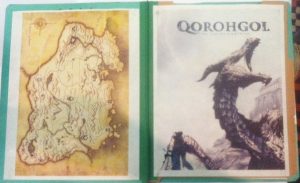 The reaction was amazing. The players were shocked, delighted, and a little thrown by the dragons that greeted them when they opened the folders. Each dragon had a unique "thu'um", a magical phrase in the language of the dragons, that gave them thier powers and the dragon's name was translated from Skyrim's dragon language to reflect their powers.
The reaction was amazing. The players were shocked, delighted, and a little thrown by the dragons that greeted them when they opened the folders. Each dragon had a unique "thu'um", a magical phrase in the language of the dragons, that gave them thier powers and the dragon's name was translated from Skyrim's dragon language to reflect their powers.
- Fendufyn, “The Devouring Bane”, was the biggest of the dragons and had a thu'um that turned his skin to stone.
- Qorohgol, “The Raging Lightning”, had skin that became electric, and electricity is VERY dangerous in Wild Talents.
- Haslovaas, “Song of Health”, was the most intelligent of the dragons, and had the ability to turn ethereal and heal through his thu'ums.
- Strunduving, “Storm-wing Devourer”, was the smallest and fastest of the brethren, with a thu'um that gave him super speed.
- Yolvolun, “Fiery Night”, was another of the bigger dragons and had a ranged thu'um that shot fire at any unlucky targets.
- Lizinjot, “The Icy Maw”, was designed as the counterpart to Yolvolun, with capable physical stats and an ranged ice thu'um.
I explained that they were young dragons who had hatched together, but had never seen any other dragons, including their parents.
One of my important GM strategies is to leave personality information off the character sheets. Yep, I don't tell them who they are. I specify important connections to other PCs (family relationships, similarities, past history, etc), list their stats and powers, but I let the player assemble all this information into their character's personality. Most players are totally thrown when they sit down at one of my convention games for the first time, but I find that it actually increases the role-playing at the table. Instead of forcing a square peg into the round hole I created, the player is able to form a peg they are comfortable with and that fits in the hole that the party creates. Players are incredibly creative and come up with great ideas that would never have occurred to me. This also increases the player's personal investment in their character and the game as a whole.
Now this game could have gone one of two ways. The choice that many players would have gone with would be the majestic, wise, and ancient dragon route. My players shunned that for the more quirky, Looney Tunes meets The Three Stooges style game. They decided they were all adolescent brother dragons and immediately started beating on each other and looking for girl dragons. Yep, they rolled initiative and started wrestling in true brotherly fashio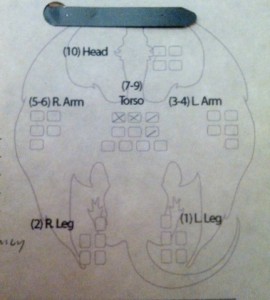 n. Although it was unplanned, it served as the perfect introduction to the Wild Talents combat system and really started the game off with a bang.
n. Although it was unplanned, it served as the perfect introduction to the Wild Talents combat system and really started the game off with a bang.
The Wild Talents system ended up being a perfect fit for this game. I was able to create powers that actually matched the dragon thu'um powers in Skyrim, as well as give the dragons stats that were appropriate for their species. It also worked to create the HUGE number of NPCs that the dragons eventually fought. WOW, do six teenage dragons plow through human NPCs! As always, the players ended up really enjoying the Wild Talents combat system. I did learn that I need to color code the NPS sheets for the next time a run an overpowered game like this, to make managing the large number of them easier! Better living through office supplies!!
As we moved through the story, I was absolutely floored by the level of role-playing in this game. My games are all very open, "sandbox" type worlds that encourage lots of role-playing and player empowerment, but this group took it to the next level. I was 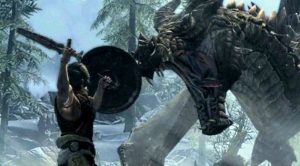 basically just along for the ride. Without pre-generated personalities to confine them, each player came up with an amazingly vibrant and unique personality for their adolescent dragon that matched perfectly with their stats and abilities. They fought with each other constantly (what else would teenage brother dragons do?), but were also very protective of one another when danger threatened. There was never a dull moment, and watching the players revel in being the dragons and not the bite-sized humans for once was a delight.
basically just along for the ride. Without pre-generated personalities to confine them, each player came up with an amazingly vibrant and unique personality for their adolescent dragon that matched perfectly with their stats and abilities. They fought with each other constantly (what else would teenage brother dragons do?), but were also very protective of one another when danger threatened. There was never a dull moment, and watching the players revel in being the dragons and not the bite-sized humans for once was a delight.
All the role-playing did take a lot of time though, and there is no time to waste in a convention game. Taking the advice of the Happy Jack's RPG podcast crew, I had designed my game in modules to provide more flexibility in the story. There were five total parts or scenes to the story. Scenes one and three were vital to the story, but scenes two and four could be skipped if we were running short on time. I had multiple plans and NPCs prepared for the finale (scene five) so that the scene could be quickly adjusted to fit the remaining time in our convention game. This high level of flexibility takes more prep time, but it allows the game to run seamlessly during the convention and lets the players resolve the game in the allotted time. It also allows the GM to run the game again and enjoy a completely different experience. Even with all the freedom the players had in this game we ended almost exactly on time.
I could tell the game was a huge success because everyone left the table as friends, and many of them were actually tweeting to each other in character for many days after. It was an amazing experience and I was truly honored that Fray, Stephen, Will, Kurt, Matt, and Sam all chose to be part of my game. They are incredible gamers and I hope to see them at my table many times in the future.
If you'd like to read the play-by-play of this game from a player's perspective, read Matt's blog post about the it at Monkey in the Cage.
